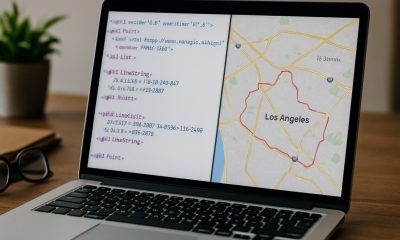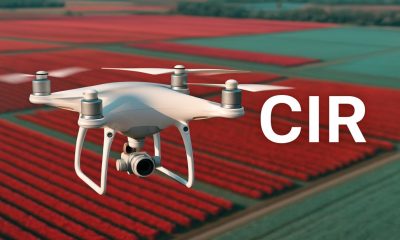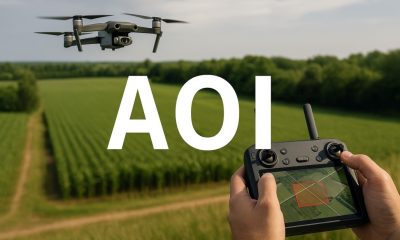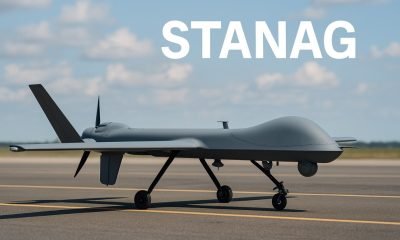- Acronym Guide
- AAM
- ABS
- AC
- ACAS
- ADS-B
- AFAC
- AGL
- AI
- AIM
- ALS
- AM
- AMA
- ANSP
- AOI
- APPI
- AUV
- AUVSI
- ARPAS-UK
- ASTM
- ATC
- BVLOS
- CAA
- CAAC
- CAB
- CASA
- CATT
- CBO
- CBR
- CBRN
- CDMA
- CDR
- CFR
- CIR
- COA
- COMINT
- CORS
- COTP
- COTR
- CPTED
- CV
- C2
- DAA
- DEM
- DFI
- DFS
- DGCA
- DHS
- DOD
- DPA
- DPEs
- DRG
- DRO
- DSM
- DSMX
- DSP
- DSSS
- DTM
- EASA
- EFT
- EO
- EOD
- EO/IR
- ELINT
- EMI
- ESC
- EVLOS
- eVTOLs
- FAA
- FCC
- FCS
- FHSS
- FICCI
- FLIR
- FOB
- FOV
- FPS
- FPV
- GBDAA
- GCP
- GCS
- GDPR
- GML
- GNSS
- GPS
- GSD
- GVC
- HDR
- HOGE
- IACRA
- ICAO
- ICS
- IMU
- INS
- IR
- ISA
- ISR
- ITU
- JARUS
- LAAMS
- LAANC
- LAATM
- LAI
- LBA
- LIDAR
- LOS
- LSALT
- MAC
- MAVLink
- MLIT
- MMS
- MSL
- MTOM
- NDAA
- NCSL
- NFZ
- NIST
- NMEA
- NOTAM
- NPA
- NPRM
- NTIA
- OBIA
- OEM
- OFDM
- OOP
- PASM
- PAV
- PCV
- PdM
- PEC
- PIC
- PID
- PIPL
- PLD
- PM
- PN
- PPK
- PPS
- PSM
- PWM
- UAM
- UAOP
- UAS
- UASTM
- UAV
- UCAVs
- UHD
- UHF
- USV
- UTM
- RAIM
- RCC
- RCS
- RFI
- ReOC
- RePL
- RMS
- ROI
- RPAS
- RPC
- RTH
- RTK
- SaR
- SAR
- SARP
- SBAS
- S.Bus
- SBIR
- SEDENA
- SfM
- SFOC
- SIGINT
- SLAM
- SMS
- SORA
- STANAG
- STTR
- sUAS
- TCAS
- TCCA
- TFR
- TIN
- TOF
- TP
- TPS
- TSA
- VHF
- VLOS
- VTOL
Drone Acronyms
What is RCS (Radar Cross Section) & How Does it Work?
By
Jacob StonerTable Of Contents

Definition
RCS, or Radar Cross Section, is a measure of how detectable an object is by radar. It quantifies how much electromagnetic energy is reflected back to a radar receiver by an object like a drone or aircraft. A higher RCS means the object appears larger to radar systems, making it easier to detect and track. A lower RCS indicates that the object is stealthier or more difficult to identify using radar.
Usage
In UAV surveillance and counter-surveillance operations, RCS is a critical factor in determining how visible a drone is to radar detection systems. It is used in both military and civilian airspace management to evaluate threat levels, enhance drone stealth profiles, or improve radar-based monitoring of uncrewed aircraft traffic.
Relevance to the Industry
Understanding and controlling Radar Cross Section is vital in defense, airspace security, and advanced drone operations. For surveillance missions where low detectability is key, drones are often designed with small profiles, non-reflective materials, or radar-absorbing coatings to minimize Radar Cross Section. Conversely, in civilian air traffic systems or anti-drone defense networks, high Radar Cross Section values help ensure drones are detectable for tracking and deconfliction.
How Does RCS (Radar Cross Section) Work?
Radar Cross Section works by quantifying the amount of radar energy reflected back to a radar system by an object, such as a drone. This measure allows radar operators to detect, classify, and track aerial objects based on how they interact with electromagnetic waves. Here’s how Radar Cross Section operates in UAV surveillance and detection contexts:
Radar Wave Emission
A radar system emits electromagnetic waves into the air. These waves travel outward until they strike an object like a UAV. The characteristics of the returning signal depend on the object’s size, shape, material, and orientation.Reflection and Scattering
When the radar waves hit the UAV, part of the energy is reflected directly back toward the radar antenna (this is the RCS), while the rest scatters in other directions or is absorbed by the drone’s surface. The reflected portion is what the radar system uses to detect the object’s presence.Calculating the Cross Section
The Radar Cross Section is not the physical size of the drone, but rather a mathematical representation of how large the drone appears to the radar system. It’s measured in square meters (m²) and depends heavily on:The drone’s orientation relative to the radar beam
The surface geometry (smooth, curved surfaces reflect less predictably)
Materials (metal reflects more than composite or radar-absorbent materials)
Influence on Detection and Tracking
A large RCS (e.g., from a metallic hexacopter) makes the drone easier to detect, track, and classify.
A small RCS (e.g., from a small carbon-fiber quadcopter or stealth-designed UAV) makes the drone harder to pick up on radar—often appearing as radar “noise” or evading detection entirely.
Applications in UAV Strategy and Defense
Surveillance UAVs benefit from a low RCS to remain covert.
Air defense systems use RCS readings to prioritize tracking and potential interception.
Civil aviation authorities may require minimum RCS thresholds to support safe drone traffic integration.
By understanding and leveraging RCS, UAV designers and operators can either minimize visibility (in stealth operations) or maximize detectability (for integration into monitored airspace), depending on mission goals and regulatory context.
Example in Use
“The UAV’s low Radar Cross Section (RCS) allowed it to operate undetected during a border surveillance mission in contested airspace.”
Frequently Asked Questions about RCS (Radar Cross Section)
What determines a drone’s Radar Cross Section?
Answer:
The drone’s size, shape, and material composition.
Angle of incidence between the drone and the radar beam.
Use of radar-absorbing materials or coatings.
Whether antennas, propellers, or payloads reflect radar waves.
Why is RCS important for military and surveillance UAVs?
Answer:
A low RCS helps drones remain hidden from radar-based air defense systems or early warning sensors.
It enables stealth operations in contested zones, improves survivability, and enhances mission success in both reconnaissance and tactical support.
Is RCS also important in civilian drone operations?
Answer:
Yes. For airspace management and drone traffic monitoring systems, a higher RCS makes drones easier to detect and track, aiding in collision avoidance and enforcement of restricted zones.
For examples of these acronyms visit our Industries page.
As the CEO of Flyeye.io, Jacob Stoner spearheads the company's operations with his extensive expertise in the drone industry. He is a licensed commercial drone operator in Canada, where he frequently conducts drone inspections. Jacob is a highly respected figure within his local drone community, where he indulges his passion for videography during his leisure time. Above all, Jacob's keen interest lies in the potential societal impact of drone technology advancements.











